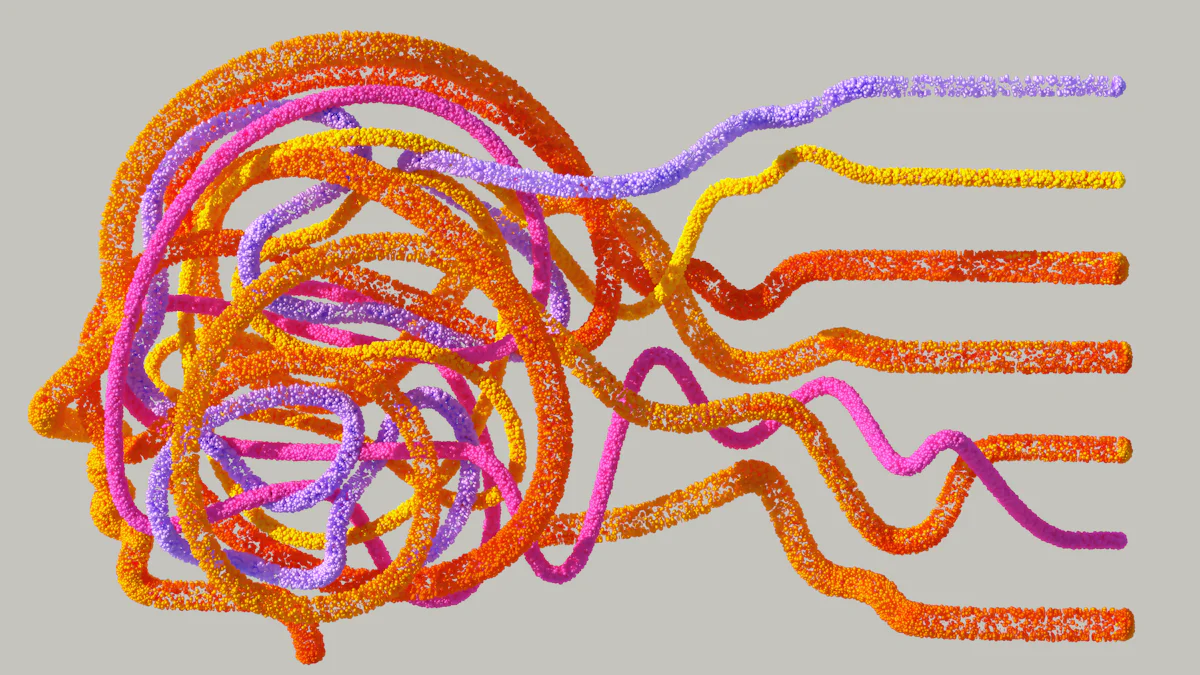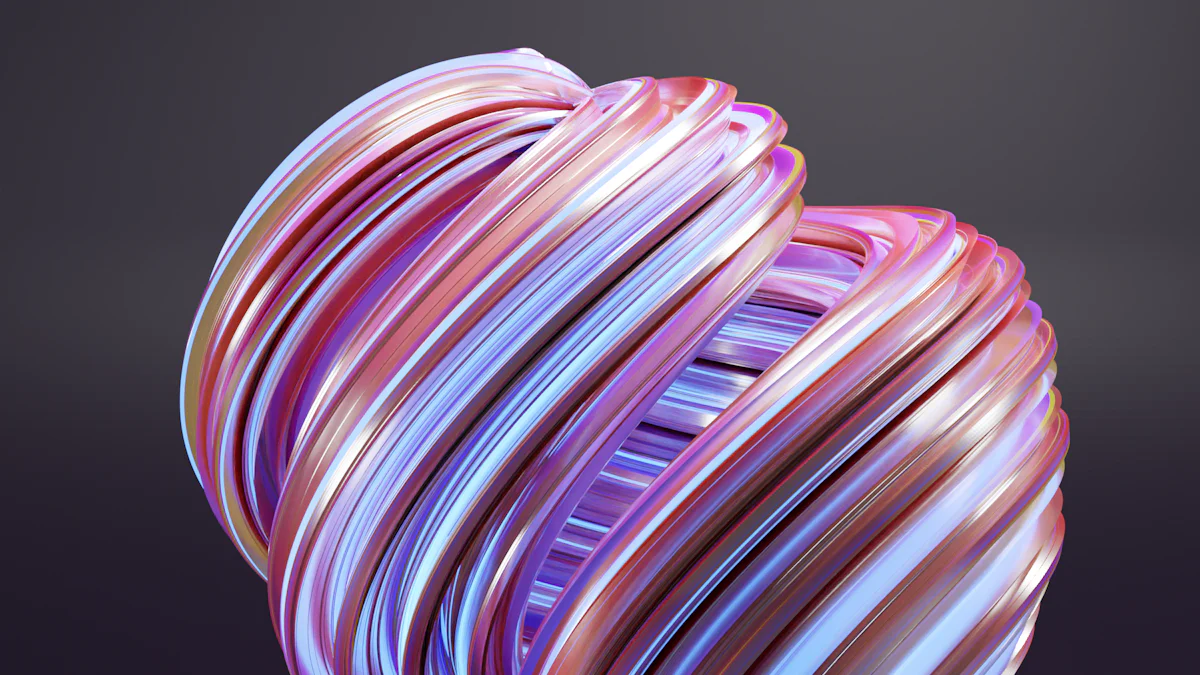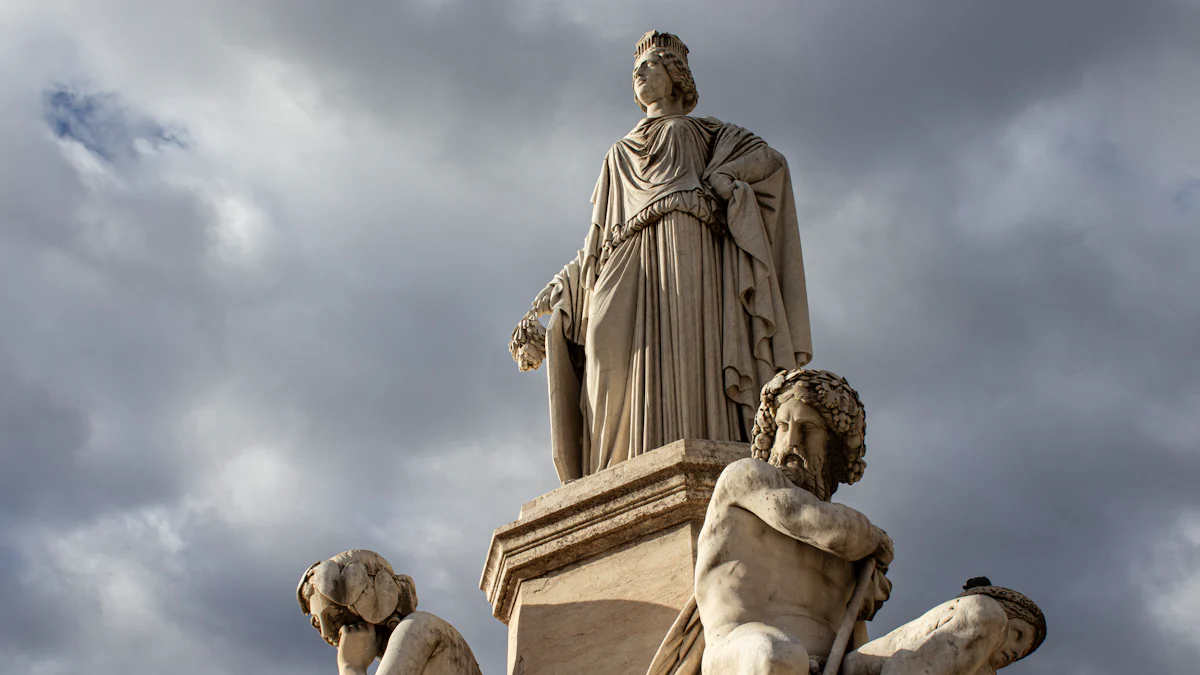Should AI-Generated Works Be Eligible for Awards?

AI-Generated Works have become increasingly prominent in creative fields such as design, music, and writing. These creations are not only gaining attention but also generating significant revenue. For instance, Botto, an AI creation, produces 350 new images weekly, with sales nearing $1 million. A notable event highlighted this trend when an AI-generated piece won a prestigious prize, sparking widespread debate. This raises a crucial question: Should AI-generated works be eligible for awards? As AI continues to evolve, the implications for traditional artists and the art world remain profound and complex.
The Event: AI Art Winning a Prize

Description of the Event
Details of the AI-generated work that won
An AI-generated artwork recently captured the spotlight by winning a prestigious art competition. This piece, created by an advanced algorithm, showcased intricate patterns and vibrant colors. The AI behind this creation analyzed thousands of images to produce a unique composition. The artwork's complexity and originality impressed the judges, leading to its victory.
The competition or award it won
The Colorado State Fair hosted the competition where this AI-generated work triumphed. Traditionally, this fair celebrates human creativity and craftsmanship. However, the inclusion of AI-Generated Works marked a significant shift. The fair's decision to award an AI creation sparked discussions about the role of technology in art. Following the event, the fair implemented new rules requiring artists to disclose AI usage in their submissions.
Immediate Reactions
Public and critical response
The public's reaction to the AI-generated artwork's victory was mixed. Some individuals praised the innovation and creativity displayed by the AI. They viewed it as a testament to technological advancement. Others expressed skepticism, questioning the authenticity of AI-Generated Works. Critics argued that AI art challenges traditional notions of creativity and artistry. The debate highlighted moral concerns, including the potential exploitation of AI in art.
Reactions from the art community
The art community's response mirrored the public's divided opinions. Some artists embraced AI as a new tool for creative expression. They compared AI to traditional tools like brushes or digital software. However, many artists voiced concerns about the implications of AI-Generated Works. They worried about the impact on labor conditions and the value of human artistry. Competitions like the Beautiful Bizarre Art Prize even banned AI-generated entries to ensure fairness for human creators.
"AI art challenges existing concepts of artistry and creativity," noted one art critic. This statement encapsulates the ongoing debate about AI's role in the art world. As AI continues to evolve, its influence on creative fields will likely grow, prompting further discussions about its place in competitions and awards.
Philosophical Considerations
The Nature of Art
Definition and purpose of art
Art serves as a reflection of human experience, capturing emotions, ideas, and cultural narratives. Traditionally, artists have used their skills to express creativity and convey messages. Art's purpose extends beyond mere aesthetics; it challenges perceptions and provokes thought. Philosophers like Plato and Aristotle have long debated art's role in society, emphasizing its ability to imitate life and evoke emotional responses.
Can AI creations be considered art?
AI-Generated Works introduce a new dimension to this age-old debate. These creations, produced by algorithms, challenge the conventional understanding of art. Some argue that AI lacks the consciousness and intent that define artistic expression. However, others view AI as a tool that can enhance creativity, producing works that humans alone might not conceive. The question remains: Can AI-Generated Works possess the originality and emotional depth traditionally associated with art? This debate continues to evolve as AI technology advances.
The Role of Tools in Art
Historical use of tools in art creation
Throughout history, artists have employed various tools to aid their creative processes. From brushes and chisels to digital software, tools have played a crucial role in art creation. These instruments extend an artist's capabilities, allowing for new forms of expression. The introduction of photography and digital media sparked similar debates about the authenticity and value of art created with new technologies.
AI as a tool versus AI as a creator
AI's role in art creation blurs the line between tool and creator. While some view AI as an advanced tool, others see it as an independent creator capable of generating unique works. AI-Generated Works often result from complex algorithms analyzing vast datasets, leading to compositions that surprise even their developers. This raises questions about authorship and artistic credit. If AI acts as a creator, who deserves recognition for the work? The artist who programmed the AI, or the AI itself? These questions highlight the complexities of integrating AI into the art world.
"AI raises profound questions about the nature of human creativity and the complexities of artistic credit," noted one philosopher. This statement underscores the ongoing philosophical exploration of AI's impact on art. As AI-Generated Works become more prevalent, society must grapple with these questions to understand the evolving landscape of creativity.
Ethical and Practical Implications
Authorship and Ownership
Who owns AI-generated works?
The question of ownership for AI-Generated Works presents a complex challenge. Traditional copyright laws, such as those in the United States, protect only human-authored creations. This leaves AI-generated content in a legal gray area. The U.S. Copyright Office has clarified that copyright protection applies solely to the human-authored parts of a work. Consequently, AI-generated images often lack clear ownership rights. This ambiguity raises questions about who can claim ownership of these creations. Is it the developer of the AI, the user who inputs data, or the AI itself? As AI technology advances, legal systems may need to adapt to address these issues.
Credit and recognition for AI creations
Credit and recognition for AI-Generated Works also pose significant challenges. When an AI creates a piece of art, determining who deserves acknowledgment becomes difficult. Should the programmer receive credit for designing the algorithm? Or should the AI itself be recognized as the creator? These questions highlight the need for new standards in content attribution. The EU's AI Act suggests that legislation may emerge to address these concerns, potentially establishing fair use standards for AI art. As the debate continues, the art world must consider how to balance recognition between human and AI contributors.
Impact on Human Artists
Competition with AI-generated works
AI-Generated Works introduce new competition for human artists. These creations can produce art at a rapid pace, often with impressive results. Some artists worry that AI-generated content may overshadow human efforts, leading to reduced opportunities and recognition. The presence of AI in creative fields challenges traditional artists to differentiate their work and maintain relevance. This competition raises concerns about the future of human artistry and the value placed on human creativity.
Opportunities and challenges for artists
Despite the challenges, AI-Generated Works also offer opportunities for artists. AI can serve as a tool to enhance creativity, allowing artists to explore new styles and techniques. By collaborating with AI, artists can push the boundaries of their craft and create innovative works. However, this collaboration requires artists to adapt and learn new skills, such as programming and data analysis. Embracing AI technology can lead to exciting possibilities, but it also demands a willingness to evolve and integrate new methods into traditional practices.
"AI technology offers both challenges and opportunities for artists," remarked an art critic. This statement encapsulates the dual nature of AI's impact on the art world. As AI-Generated Works become more prevalent, artists must navigate this evolving landscape to thrive in a technology-driven environment.
Historical Context and Future Possibilities

Historical Precedents
Past technological advancements in art
Throughout history, art has both influenced and been influenced by technology. This relationship has led to many exciting artworks. The invention of the camera in the 19th century revolutionized visual art. Artists like Claude Monet and Edgar Degas embraced photography, using it to explore new perspectives and compositions. Similarly, the introduction of digital tools in the late 20th century transformed graphic design and animation. These advancements expanded the boundaries of creativity, allowing artists to experiment with new techniques and mediums.
"Art is not a mirror held up to reality, but a hammer with which to shape it," said Bertolt Brecht. This quote highlights how artists have historically used technology to challenge and reshape artistic norms.
Controversies and acceptance over time
Technological advancements in art have often sparked controversy. When photography emerged, critics questioned its artistic value, arguing that it lacked the skill and creativity of traditional painting. Over time, however, photography gained acceptance as a legitimate art form. Similarly, digital art faced skepticism in its early days, with some dismissing it as mere computer-generated imagery. Yet, as artists demonstrated the creative potential of digital tools, the art world gradually embraced these innovations.
AI-Generated Works now face similar scrutiny. Critics question whether AI can truly create art, given its lack of consciousness and intent. However, as AI technology advances, it may follow a path similar to photography and digital art, gaining acceptance as a new form of artistic expression.
Future of AI in Creative Fields
Potential developments in AI creativity
While still in its infancy, the potential impact AI-generated art can have on artists and the arts is massive. AI-Generated Works could revolutionize creative fields by producing art that challenges traditional notions of creativity. As AI algorithms become more sophisticated, they may generate increasingly complex and original works. This could lead to new artistic movements and styles, expanding the possibilities for creative expression.
AI's ability to analyze vast datasets allows it to identify patterns and trends that humans might overlook. This capability could inspire artists to explore new themes and concepts, pushing the boundaries of their craft. However, the use of automation and AI in art creation leads to an artistic achievement gap, raising questions about the role of human creativity in this new landscape.
Long-term implications for the art world
Artificial intelligence is causing a stir among the arts community as concerns surrounding the future of artistic occupations loom. AI-Generated Works could disrupt traditional art markets, challenging the value placed on human-created art. Some fear that AI-generated content may overshadow human efforts, leading to reduced opportunities for artists. This raises concerns about the future relevance and protection of artistic occupations.
Despite these challenges, AI also offers opportunities for collaboration and innovation. Artists who embrace AI technology can explore new creative avenues, enhancing their work with AI-generated insights. As AI continues to evolve, the art world must adapt to these changes, finding ways to integrate AI-Generated Works while preserving the value of human artistry.
"The future belongs to those who prepare for it today," said Malcolm X. This statement underscores the importance of adapting to technological advancements in art. As AI-Generated Works become more prevalent, artists and the art world must navigate this evolving landscape to thrive in a technology-driven environment.
This blog explored the complex relationship between AI and art, highlighting key points such as the philosophical, ethical, and practical implications of AI-generated works. AI art challenges traditional notions of creativity and artistry, raising questions about authorship and ownership. The evolving role of AI in creative fields may redefine the fundamental purpose of art practices. As AI technology advances, artists face both opportunities and challenges. Readers are encouraged to reflect on their perspectives regarding the eligibility of AI-generated works for awards and consider the broader implications for the art world.
See Also
AI-Generated Art: Is It Truly Art?
Labeling AI-Generated Content: Is It Necessary?
Authors Partnering with AI for Creativity
